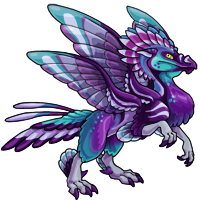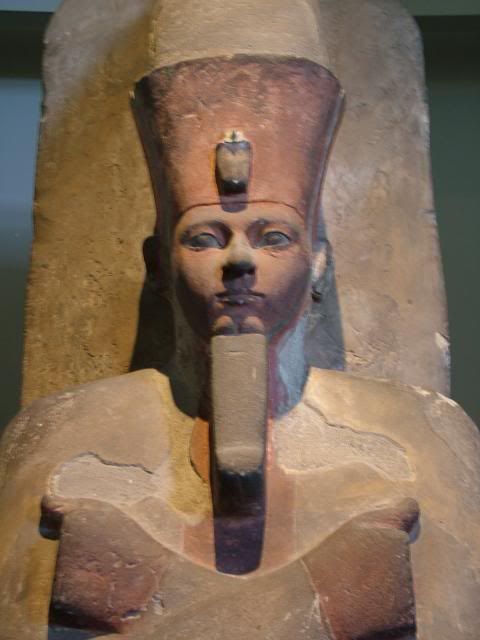Amenhotep

Amenhotep I was the second Pharaoh of the 18th dynasty of Egypt. His reign is generally dated from 1526 to 1506 BC. He was born to Ahmose I and Ahmose-Nefertari, but had at least two elder brothers, Ahmose-ankh and Ahmose Sapair, and was not expected to inherit the throne. However, sometime in the eight years between Ahmose I's 17th regnal year and his death, his heir apparent died and Amenhotep became crown prince. He then acceded to the throne and ruled for about 21 years.
Amenhotep probably came to power while he was still young himself, and his mother, Ahmose-Nefertari, appears to have been regent for him for at least a short time. This is evidenced because both he and his mother are credited with opening a worker village at the site of Deir el-Medina. Amenhotep took his sister Ahmose-Meritamon as his Great Royal Wife. Another wife's name, Sitkamose, is attested on a nineteenth dynasty stele.
Beyond this, his relation to all other possible family members has been questioned. Ahhotep II is usually called his wife and sister, despite an alternate theory that she was his grandmother. He is thought to have had one son by Ahhotep II, Amenemhat, who died while still very young. This remains the consensus, although there are arguments against that relationship as well. With no living heirs, Amenhotep was succeeded by Thutmose I, whom he married to his sister, Aahmes, although once again there is no definite proof that the two were related. Since Aahmes is never called "King's Daughter" in any inscription, some scholars doubt this relation as well.
Amenhotep I's Horus and Two Ladies names, "Bull who conquers the lands" and "He who inspires great terror," are generally interpreted to mean that Amenhotep I intended upon dominating the surrounding nations. Two tomb texts indicate that he led campaigns into Nubia. According to the tomb texts of Ahmose, son of Ebana, Amenhotep later sought to expand Egypt's border southward into Nubia and he led an invasion force which defeated the Nubian army. The tomb biography of Ahmose Pen-Nekhebet says he also fought in a campaign in Kush, however it is quite possible that it refers to the same campaign as Ahmose, son of Ebana. Amenhotep built a temple at Saļ, showing that he had established Egyptian settlements almost as far as the third cataract.
Large numbers of statues of Amenhotep have been found, but they are mostly from the Ramessid period, made for his posthumous funerary cult. This makes study of the art of his reign difficult. Based upon his few authentic statues, it appears that Amenhotep continued the practice of copying Middle Kingdom styles. Art in the early 18th dynasty was particularly similar to that of the early Middle Kingdom, and the statues produced by Amenhotep I clearly copied those of Mentuhotep II and Senusret I. The two types are so similar that modern Egyptologists have had trouble telling the two apart.
It was probably Amenhotep I who opened the artisan's village at Deir el-Medina which was responsible for all the art which filled the tombs in Thebes' necropolis for the following generations of New Kingdom rulers and nobles. The earliest name found there is that of Thutmose I, however Amenhotep was clearly an important figure to the city's workmen since he and his mother were both its patron deities.
Two important pieces of literature were developed during this period. First, the Book of What is in the Underworld, an important funerary text used in the New Kingdom, is believed to have come into its final form during Amenhotep's reign, since it first appears in the tomb of Thutmose I. The Ebers papyrus, which is the main source for information on ancient Egyptian medicine, seems to date to this time (the mention of the Heliacal rise of Sothis by which the early New Kingdom chronology is usually calculated was found on the back of this document).
Amenhotep was deified upon his death and made the patron deity of the village which he opened at Deir el-Medina. His mother, who lived at least one year longer than he did, was also deified upon her death and became part of his litany. As previously mentioned, the vast majority of Amenhotep's statuary comes in the form of a funerary idol from this cult during later periods. When being worshiped, he had three deific manifestations: "Amenhotep of the Town," "Amenhotep Beloved of Amun," and "Amenhotep of the Forecourt," and was known as a god who produced oracles. Some of the questions asked of him have been preserved on ostraca from Deir el-Medina, and appear to have been phrased in such a way that the idol of the king could nod (or be caused to nod) the answer. He also had a number of feasts dedicated to him which were held throughout the year. During the first month, a festival was celebrated in honor of the appearance of Amenhotep to the necropolis workmen, which probably means his idol was taken to Deir el-Medina. Another feast was held on the thirtieth of the fourth month, and then two more were held in the seventh month. The first was the "spreading of the funeral couch for king Amenhotep," which probably commemorated the day of his death. The second, celebrated for four days at the very end of the month, was the "great festival of king Amenhotep lord of the town." Later in Egyptian history, the seventh month was named after this festival, "Phamenoth." Another festival was held on the 27th of the ninth month, and the last known festival was held for several days between at least the eleventh and thirteenth days of the eleventh month, which in all probability commemorated the date of Amenhotep's accession to the throne.
Further light is shed upon Amenhotep's funerary cult by multiple documents which appear to detail the rituals dedicated to Amenhotep. Three papyri from the time of Ramesses II record the liturgy used by the priests, and reliefs at Karnak and Medinet Habu illustrate select rites and spells. The bulk of the rituals concern preparing for and conducting the daily offerings of libations for the idol, including a recitation of a formula, and purifying and sealing the shrine at the end of the day. The remainder of the rites concern how to conduct various feasts throughout the year. In these cases, Amenhotep's idol or a priest representing him is actually officiating the worship of Amun instead of being worshipped himself, which was not a typical cultic practice in ancient Egypt.


